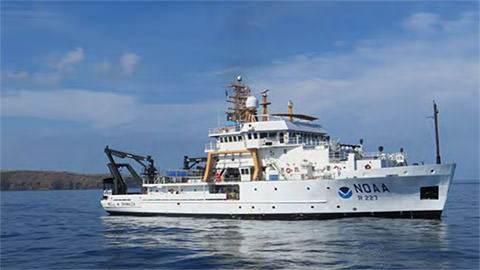
Bathymetric and seafloor information is a critical data layer for decision-making for a number of marine management fields including navigational safety, fisheries, renewable energy, oil and gas extraction, and ecological conservation. Prior to this effort only 13% of the seafloor off of Southern California out to the Exclusive Economic Zone Line had available mapping data. To address this information gap, the Channel Islands National Marine Sanctuary (CINMS) and the National Centers for Coastal and Ocean Science (NCCOS) launched the Southern California Seafloor Mapping Initiative in 2014.
CINMS and NCCOS staff gathered all the available seafloor information from state and federal program, created a geodatabase, and shared this information via an ArcGIS Online Story Map with stakeholder groups. The team then hosted a one-day workshop with 17 stakeholder groups to identify needs and priority areas for new seafloor data. Participants were asked to present how their group is involved in working with seafloor data, their information and data needs, and any plans for data acquisition. After presentations, stakeholders discussed known data gaps. Seafloor mapping priorities were captured as georeferenced shapefiles in ArcGIS.
Following the workshop, the priority shapefiles were organized and ranked by examining spatial overlap. While this methodology did not perfectly account for each stakeholder's prioritization ranking, priority areas largely coalesced across stakeholders. Areas that ranked highly across stakeholders included waters of the Channel Islands National Marine Sanctuary, the nearshore "white zone," Marine Protected Areas, and potential locations for offshore energy. Spatial overlap of stakeholder priority was highest for CINMS' waters as a number of agency stakeholders have jurisdictions and management measures in place around the northern Channel Islands. Priority area polygons were shared with the Interagency Working Group on Ocean and Coastal Mapping's Sea Sketch project (A larger national scale coordination project of which this project is in conjunction with) to help plan future seafloor data acquisitions. The workshop outcomes have already guided NCCOS and CINMS' mapping efforts.
Keywords
Mapping, Habitat, Seafloor, Spatial Management, Bathymetry

